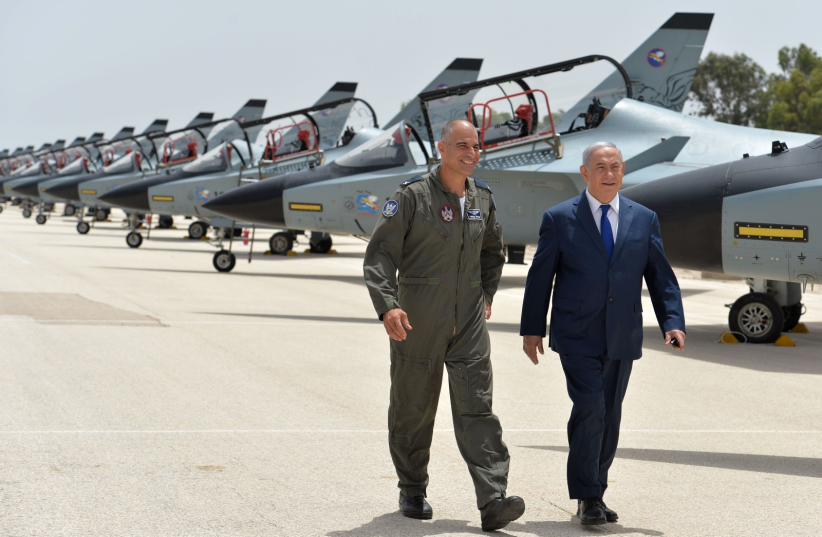Syrian state media accused Israel of launching a strike against targets outside Damascus on Saturday night and claimed the country’s air defenses intercepted a number of missiles, the second time in less than 24 hours.
According to pro-regime sources, the anti-aircraft batteries were activated after they identified “hostile foreign objects” entering Syrian airspace from Israel. The reports of additional airstrikes came a day after the regime accused the Jewish State of striking targets outside the capital on Friday night.
“Aerial defenses detected hostile targets coming from the direction of Quneitra and intercepted them,” a military source was quoted on Friday by Syria’s SANA news agency as saying.
The state television channel showed footage of the night sky with a point of light firing up into it and the sound of explosions.
According to pro-opposition reports, the strikes targeted the First Division HQ of the Syrian Army Forces near al-Kiswah, south of Damascus. The site, some 50 km. from the Israeli border, is near Iranian and Hezbollah storage sites and air defense batteries.
Other local reports said the strikes targeted Iranian arms depots.
There was no comment on the strikes by Israel, which rarely discusses alleged IAF operations on the northern front. Israeli officials, however, have repeatedly voiced concerns over Iran’s presence in Syria and the smuggling of sophisticated weaponry to Hezbollah from Tehran to Lebanon via Syria, stressing that both are redlines for the Jewish state.
In an effort to prevent sophisticated weaponry from reaching Hezbollah, Israel frequently carries out airstrikes against Iran and its allies in Syria. In January, Prime Minister Benjamin Netanyahu said that Israel has a set policy of preventing Iran’s entrenchment in Syria.
IAF jets are believed to have carried out dozens of attacks in al-Kiswah and Damascus International Airport as part of its effort to prevent Iranian entrenchment in the war-torn country.
In December, an Israeli official confirmed that Israel had carried out airstrikes against Iranian targets near the Syrian capital that month, hitting an arms depot and several military positions including air defense facilities. In response to the strikes, Syria activated its air defense systems, leading to Israel downing an anti-aircraft missile.
Detritus from the anti-aircraft missile fell in an open areas of Israel’s Golan Heights.
A month later IAF jets struck the site again. The London-based Syrian Observatory for Human Rights (SOHR) reported that the jets targeted missile depots belonging to Hezbollah in the al-Kiswah area, as well as Damascus International Airport. Other local reports said the strikes destroyed Iranian cargo planes at the airport southeast of the capital.
In April, Israeli planes flying in Lebanese airspace targeted an Iranian surface-to-surface missile factory in a Syrian base in Masyaf in the province of Hama. SANA reported that Assad regime air defenses intercepted and downed some of the IAF rockets.
While SANA said the interception of the Israeli missiles resulted in the destruction of several buildings and the wounding of three “fighters,” according to a report by SOHR, Iranian “elements” and pro-Iranian terrorists were killed and another 17 were injured.
SOHR reported that the strike targeted a Syrian military college in the town and two buildings used by Iranian forces in nearby villages – a development center for medium-range missiles in Zawi and a training camp in Sheikh Ghadban.
Satellite images released by Israeli intelligence firm ImageSat Intl. (ISI) showed the factory’s complete destruction.
“The main industrial structures were completely destroyed, including the main hangar and the adjacent three production hangers and buildings. The rest of the structures were affected and damaged by the blast,” ISI said, adding that they “assess that all the elements and/or equipment which were inside are completely destroyed as well.”
